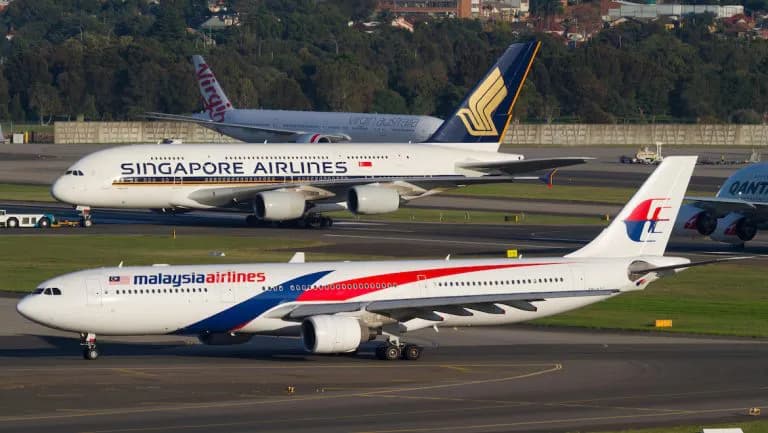First topic, let’s give it a go.
Following the launch of the Vaccinated Travel Lane (VTL) between Malaysia and Singapore, which is planned to come into effect from the 29th of November, 2021, Malaysia Airlines and Singapore Airlines has come to an agreement to further their codeshares. In this agreement, Singapore Airlines will place their flight codes on many domestic services operated by Malaysia Airlines, and Malaysia Airlines will place their flight codes on various long haul services to Europe and South Africa.
Routes operated by Malaysia Airlines
Coming into effect on the 29th of November 2021, Singapore Airlines flight codes can be found on Malaysia Airlines flights operating from their hub in Kuala Lumpur to:
- Alor Setar
- Bintulu
- Johor Bahru
- Kota Kinabalu
- Kuala Terengganu
- Kuantan
- Kuching
- Labuan
- Langkawi
- Miri
- Penang
- Sandakan
- Sibu
- Tawau
Out of these 14 destinations, 6 are located in Peninsular Malaysia and 8 are located in East Malaysia.
Routes operated by Singapore Airlines
From the 1st of January, 2022, Malaysia Airlines flight codes will be advertised on Singapore Airlines flights operating from their hub in Singapore Changi Airport to destinations such as:
- Barcelona
- Copenhagen
- Frankfurt
- Moscow
- Munich
- Rome
- Zurich
- Johannesburg
- Cape Town
Out of these 9 destinations, 7 are located in Europe and 2 in Africa.
What does this mean for their respective airlines?
For Malaysia Airlines
For Malaysia Airlines, this is an attempt to bring themselves back into the highly competitive Asia to Europe flight sectors. Having operated to most of the destinations that are currently listed such as Frankfurt, Munich, Rome, Zurich on daily, and in some cases, twice daily services prior to their restructuring, they’ve long since wanted to start operating to these destinations profitably, though attempts were often futile, leading to them pulling out from those airports. Similarly, this is the case with routes to Johannesburg and Cape Town.
However, what this does mean is that we’d have to wait a while longer until we see Malaysia Airlines fully return to Europe and South Africa. A combination of a weak financial state, as well as a lack of equipment allowing them to sustainably operate these routes, is also another large factor. That said, it is possible that we see a possible widebody order coming in the near future as they aim to replace their older A330-200, A330-300 and A380-800 that are expected to be retired. When that happens, it leaves their fleet with only six A350-900. It is however rumoured that there may be a very large order for the A330neo or A350 family in the works.
For Singapore Airlines
For Singapore Airlines, on the other hand, this only strengthens their position as the industry looks to recover, particularly in the Asian region, with long haul flights starting to be filled. They’ve also just brought their A380-800 back into service, with the airline operating frequent services to Kuala Lumpur for crew re-familiarisation, as well as having already reinstated the A380-800 to London on their daily midnight service.
Singapore Airlines has gotten through the pandemic much better than other competitors in the region such as Thai Airways and Cathay Pacific, and using this as a platform to further their position as the largest player in the market is only going to benefit them more. In addition, as Australia looks to start to relax measures and open its borders again, Singapore Airlines is in a prime position to ramp up service to Oceania and Europe and benefit from people needing to travel again.
